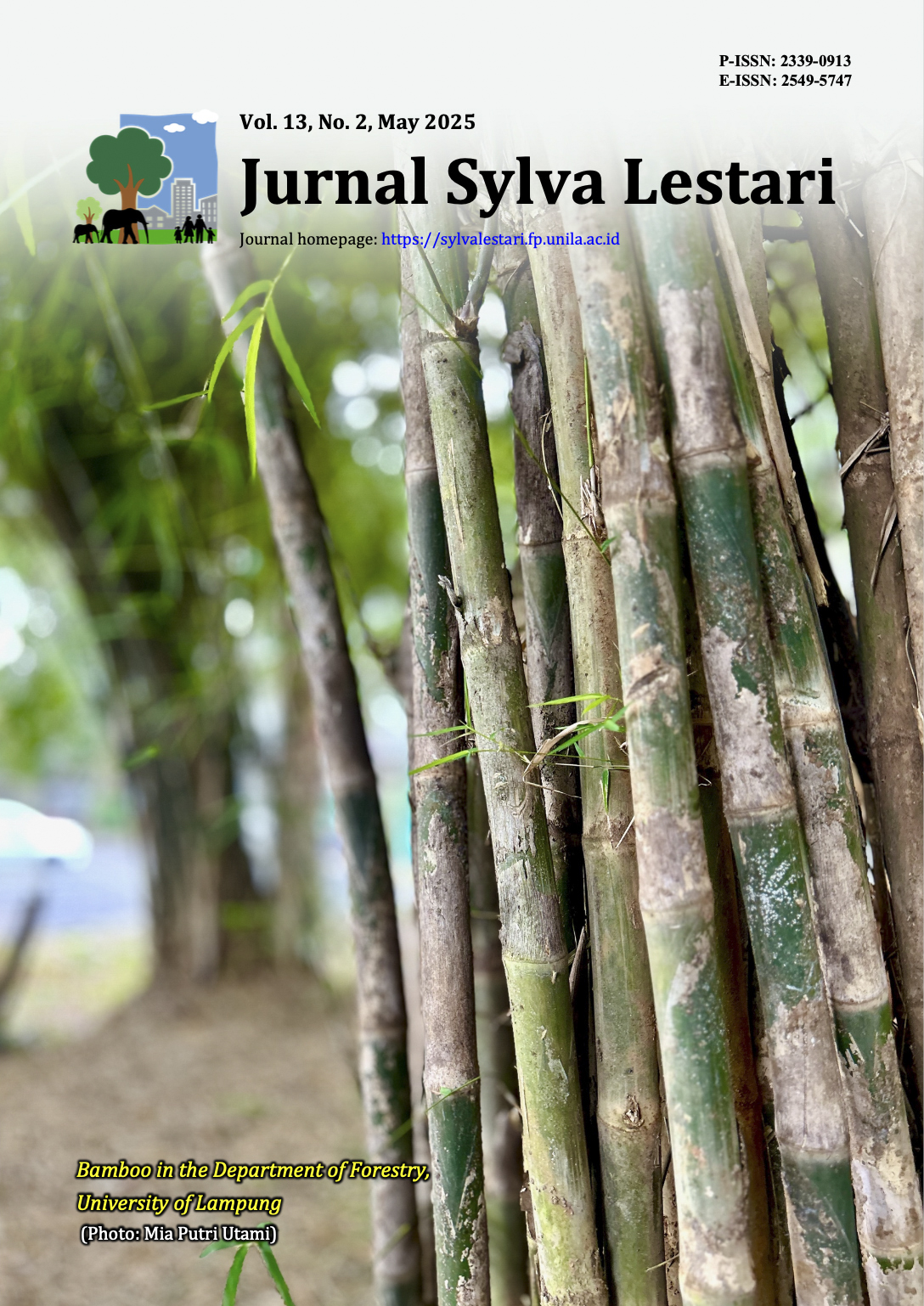Carbon Stock and Potential for Carbon Absorption by Mangrove Forests on Maspari Island: The Outermost Small Island in South Sumatra
DOI:
https://doi.org/10.23960/jsl.v13i2.1095Abstract
Maspari Island is the only small outermost island located in the southern part of Bangka Strait, included in the coastal area of Ogan Komering Ilir Regency, South Sumatra. The island harbors a mangrove ecosystem that is believed to play a significant role in climate change mitigation through carbon storage. This study aims to identify mangrove species and measure carbon stock estimates in upper-stand biomass, lower-stand/root biomass, and sediment. Identification of mangrove species using a vegetation analysis approach. Transect plots measuring 10 m × 10 m were parallel to the coastline at 6 observation station points. The diameter of vegetation at the tree and sapling levels was measured at a height of 1.3 m from the ground surface. Carbon stock estimates were calculated using allometric equations and sediment carbon analysis methods. The results identified seven mangrove species: Avicennia marina, Bruguiera sexangula, Ceriops tagal, Excoecaria agallocha, Rhizophora apiculata, Rhizophora stylosa, and Sonneratia alba. Estimated carbon stocks of mangrove stands at all stations reached 3,443.42 tC/ha, with an average of 573.90 tC/ha, while carbon stocks in roots amounted to 862.96 tC/ha, with an average of 143.83 tC/ha. The total estimated carbon stock of mangrove sediment at all stations was 240.71 tC/ha, with an average of 40.12 MgC/ha. Sonneratia alba provided the highest carbon absorption, reaching 3,059 tC/ha for the upper stand and 697.80 tC/ha for the lower stand. Considering the contribution of the carbon storage potential in Maspari Island, this study suggests extending the investigation of the mangrove carbon fixation in other small islands in Indonesia, especially for the S. alba species.
Keywords: carbon stock, mangrove, Maspari Island, sediment, carbon stock, Sonneratia alba
Downloads
Downloads
Published
How to Cite
Issue
Section
Statistics
 Abstract views: 387 times
Abstract views: 387 times PDF downloaded: 423 times
PDF downloaded: 423 times
Metrics
License
Copyright (c) 2025 Tengku Zia Ulqodry, Muhammad Raihan, Muhtadi, Sarno, Muhammad Hendri, Rezi Apri, Wike Ayu Eka Putri, Riris Aryawati

This work is licensed under a Creative Commons Attribution-NonCommercial 4.0 International License.
Authors retain copyright and grant the journal right of first publication with the work simultaneously licensed under a Creative Commons Attribution-NonCommercial 4.0 Licence that allows others to share the work with an acknowledgement of the work's authorship and initial publication in this journal.
Authors are able to enter into separate, additional contractual arrangements for the non-exclusive distribution of the journal's published version of the work (e.g., post it to an institutional repository or publish it in a book), with an acknowledgement of its initial publication in this journal.
Authors are permitted and encouraged to post their work online (e.g., in institutional repositories or on their website) prior to and during the submission process, as it can lead to productive exchanges, as well as earlier and greater citation of published work (See The Effect of Open Access).









